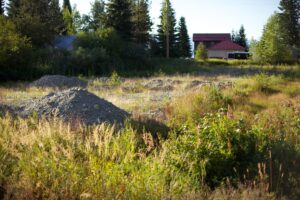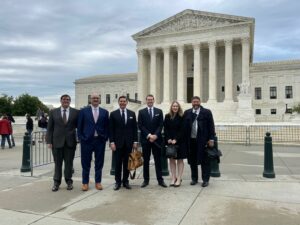The Supreme Court’s 2023 decision in Sackett v. EPA was a sea change in federal government, resolving one of the nation’s greatest property rights injustices.
The ruling, known as Sackett II, not only cleared the way for PLF clients Chantell and Mike Sackett to build on their land without having to beg for a prohibitively expensive Clean Water Act permit. It also drastically limited the regulatory reach of agencies like the EPA and Army Corps of Engineers. They now may regulate as “waters” only relatively permanent, continuously flowing bodies of water. And a feature’s status as a “water” should be obvious to regular folks, not just experts.
But even with this landmark win, the fight isn’t over. Government agencies are loathe to give up power over lives and property. Bureaucrats now believe they’re equally insulated from the Supreme Court and routinely ignore its decisions, including Sackett II.
Dan Ward is among a growing number of landowners injured by the federal government’s regulatory recalcitrance. His simple desire to build a pond at his rural homestead in Iowa landed him in the crosshairs of the Army Corps’ power-hungry desire to regulate landowners and completely disregard the Supreme Court.
The pond would cross an unnamed tributary on his land—really a narrow and ordinarily dry depression on the surface of the ground—that is many times removed from the nearest traditionally navigable water. So Dan hired an environmental consultant to ensure regulatory compliance.
The agency later claimed authority over this depression because a Corps official spotted some puddles and a tiny trickle in it one day in April 2023—after rainfall. Incredibly, the Corps concluded from this single-day, rain-driven trickle that this so-called “tributary” of the Missouri River (which is located dozens of miles away) is seasonally flowing and thus meets Sackett II’s “relatively permanent” CWA standard.
Under the agency’s strained reasoning, and despite substantial evidence showing the tributary cannot collect enough water to qualify for federal regulation, the Corps asserted that Dan needed a costly federal permit to finish his pond.
In Sackett II, the Supreme Court roundly rebuked such behavior by the EPA and Army Corps, unanimously rejecting in no uncertain terms the agencies’ longstanding but flawed approach to regulating private land under the CWA.
Represented free of charge by Pacific Legal Foundation, Dan is fighting back against the Army Corps’ wrongful claim of control over his land. A win will restore his property rights and force federal agencies to comply with Supreme Court decisions.
Dan’s battle is the latest PLF case that aims to ensure Sackett II has the teeth intended by the Supreme Court to keep the executive branch of government where it belongs within the Constitution’s separation of powers.
In October 2024, a division engineer at the Army Corps overturned the tributary designation on Dan’s property because the Corps failed to provide enough information to support its conclusion that the unnamed tributary flows in “a seasonal and predictable manner” and because it selectively relied on evidence supporting its conclusion and ignored evidence contradicting it. The Corps must now reevaluate Dan’s property and remedy these failings.
What’s At Stake?
- In Sackett II, the Supreme Court returned the federal government's power to regulate private property under the Clean Water Act to its original limits. Under the Act, the government can regulate only continuously flowing bodies of water that look like “waters” to ordinary people. Under this commonsense standard, temporary creeks don’t make the cut. The Corps’ willful refusal to recognize limits on its power is an affront to the rule of law.



















